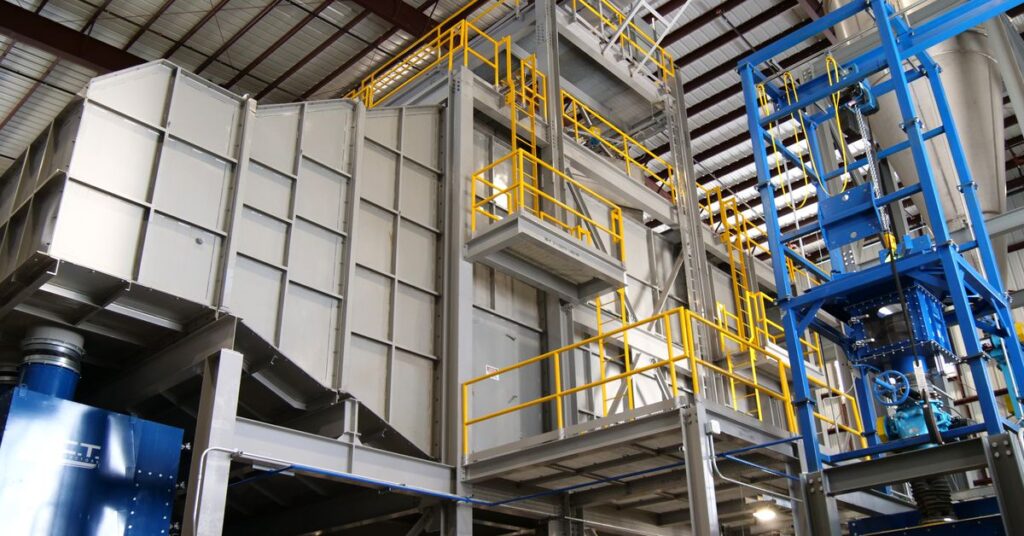Data centers are a growing climate problem, especially as the energy needed to train AI models inflates tech companies’ carbon footprints. A startup that emerged from Google’s X lab claims its technology can provide a solution by pulling carbon dioxide out of the air, utilizing servers’ waste heat, and generating water to help cool data centers more efficiently.
280 Earth’s Innovative Approach
The company, 280 Earth, has signed a $40 million agreement to capture carbon dioxide emissions for major players through the Frontier initiative. This initiative, launched by Stripe, Alphabet, Meta, Shopify, and McKinsey in 2022, supports emerging carbon removal technology. Buyers include these founding members, along with Autodesk, H&M Group, JPMorgan Chase, and Workday.
Frontier Initiative and Carbon Removal
Filtering CO2 out of the air is trending among companies aiming to meet sustainability targets. Frontier has brokered deals with other startups using rocks, liquid smoke, and sewage to capture carbon. “When we started 280 Earth as a moonshot at X, our vision was always to find a radically effective, affordable, and scalable way to remove billions of tons of carbon from our atmosphere. We’re excited to see this momentum with Frontier buyers,” said Astro Teller, captain of moonshots at Alphabet’s X.
How 280 Earth’s Technology Works
280 Earth builds modules with absorbent materials, known as sorbents, to filter CO2 from the air. Similar to direct air capture (DAC) plants, 280 Earth’s technology claims to be more efficient, working in tandem with data centers by drawing power from their waste heat. Unlike other DAC technologies that work in big batches, 280 Earth operates continuously, saving energy by avoiding the need to reheat and cool a single chamber.
Additionally, 280 Earth’s technology captures water vapor, extracting two to four tons of water for every ton of CO2 captured. “It’s like the difference between a home oven and a professional pizza oven,” explains 280 Earth CEO John Pimentel. The technology retains heat better and avoids energy loss, optimizing efficiency.
Benefits and Challenges
280 Earth’s technology not only captures CO2 but also provides water for cooling systems, addressing the high energy and water consumption of data centers. However, the biggest challenge is scaling the technology to reduce costs. Currently, capturing CO2 is prohibitively expensive. The pilot facility in Oregon aims to capture 61,600 tons of CO2 by 2030, costing more than $600 per ton. The company plans to sequester the captured CO2 in underground storage wells in the US.
Google alone was responsible for 14.3 million metric tons of CO2 pollution in 2023, highlighting the need for larger-scale carbon removal solutions. Scaling up carbon removal can bring costs down and provide a transition period while companies shift to cleaner energy. “As much as we all want to believe that transition off of fossil fuels is going to happen quickly… It’s going to take decades,” Pimentel says. “In the meantime, we’re continuing to pump more CO2 into the atmosphere, exacerbating the problems that we already have. So I’m a believer in the all of the above solution.”
Industry Impact and Future Prospects
280 Earth’s innovative approach could create a win-win situation for data centers and other industrial facilities. Data centers, notorious for high electricity and water consumption, could benefit significantly from this technology. The potential to draw waste heat and produce water for cooling systems can help reduce operational costs and environmental impact.
However, environmental groups express concern about relying on new carbon capture technologies. These methods are still unproven at scale and expensive. As the industry evolves, it is crucial to balance immediate carbon removal efforts with long-term sustainability goals.
For more information on related topics, visit Data Centers and AI Energy Consumption and Amazon’s Carbon Removal Initiatives.
Original Story at www.theverge.com
